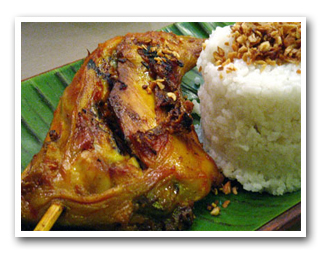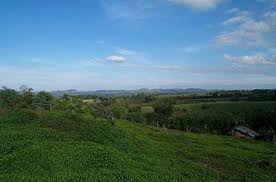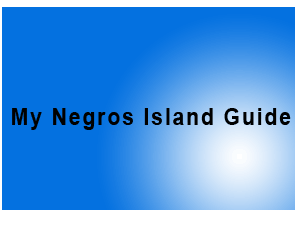- GENERAL INFORMATION
- General Info
- Geography
- Weather
- Tourist Season
- Getting In
- Getting Around
- Money
- Communication
- PLACES
- Bacolod City
- Bago City
- Cadiz City
- Escalante City
- Himamaylan City
- Kabankalan City
- La Carlota City
- Sagay City
- San Carlos City
- Silay City
- Sipalay City
- Talisay City
- Victorias City
- Binalbagan
- Calatrava
- Candoni
- Cauayan
- EB Magalona
- Hinigaran
- Hinoba-an
- Ilog
- Isabela
- La Castellana
- Manapla
- Moises Padilla
- Murcia
- Pontevedra
- Pulupandan
- Salvador Benedicto
- San Enrique
- Toboso
- Valladolid

The Ruins
Like a lady wooed by her man, the Ruins play with your emotions especially at sunset with its orange pinks and purples hues. He charms, tickles and romances you. But at sundown, the Ruins take a different persona. With blue and golden sights emanating from nooks and crannies, it is now a lady, teasing, flirting, a temptress confident of her beauty as well as her majesty.

Bacolod …. Fun in the Mountain
Motor to the Hawaiian Philippines Company for some orientation on how the famous muscovado sugar is made. Here, you will have a good understanding of the island’s sugar industry and how it is able to sweeten your day.
Municipality of Ilog

Ilog is a 3rd class municipality in the
province of Negros Occidental, Philippines. It was the first capital of
Negros Occidental and Siquijor Provinces in the late 19th century. The
first inhabitants of Ilog are mostly migrants from Panay province.
According to the 2000 census, it has a population of 46,525 people in
9,141 households.
Ilog was founded by the Augustinian Fathers Geronimo
Marin and Francisco Bustos on May 16, 1584. It was the biggest settlement in
Negros at the time of the Spanish conquest. It was the island’s commercial and
political center. The name Ilog was recommended by a Tagalog guide of the
Spaniards because the place was entirely surrounded by the longest river in the
whole island of Negros – the Ilog River.
From the very beginning Ilog seemed to have been the most important town in
Negros, perhaps because of the Ilog River. The first location of Ilog was
probably nearer to the mouth of the river.
In 1628, Ilog became a garrison town for Negros and the capital of the island
from 1632 until 1795. During these years the jurisdiction of the Ilog extended
from Suay, Himamaylan in the north, and from Kabankalan to Isio, Cauayan in the
south. Since Ilog was a garrison town, people from all over the country and from
Spain and Mexico came to trade and live here.
Aside from commercial and trading activities of the Ilognons, they also grew
rice, cacao, tobacco and coconut. Fr. Juan Avila, who died and was buried in
Ilog in 1706, established a cacao industry which was sufficient to supply the
whole Philippines. This greatly enhanced the economy of Ilog.
In 1727, Ilog was attacked and virtually conquered by marauding Moros. Most of
the surviving inhabitants fled to Carol-an, a mountain in Kabankalan, where they
found the native Negritoes, led by their Chieftain Manyabog, hospitable to them.
Twice between 1751 and 1756, Ilog was raided by plundering Moros. On both
occasions the raiders suffered heavy casualties and were finally repelled. The
people fought bravely under the leadership of their parish priest, Fr. Matias
Guerrero. The Moros left several of their dead and wounded companions as they
fled in haste down the Ilog River.
In 1860 until 1889, the town of Ilog was at the height of its “grandeur and
glory”. During the Philippine Revolution in 1826, the Ilognons have demonstrated
their defiance against Spanish rule. Today, the town of Ilog continues to
develop and diversify. The place is famous for its delicious mudcrab and
oysters.
Festivals
Kisi-kisi Festival. Ilog, being the first capital of Negros Island and Siquijor, was named as such because it is surrounded by the longest river in the whole island of Negros – the ILOG river. These river stretched up the sea where aquatic resources such as fish, crabs, oysters and shrimps are abundant. Kisi Kisi refers to the fast movement of fish, crabs, oysters and shrimps which are abundant in the sea of Ilog.
Famous Landmarks
Dancalan Cave System has three different caves namely: Cueva Kabog, Cueva Tubig,
and Cueva Intsik.
Mt. Kanlaoron is a cone-shaped mountain with a large cross at the peak.
Andulauan Bird Watching Sanctuary is home of migratory birds. Birdwatching and
swimming are the most enjoyable experience.

